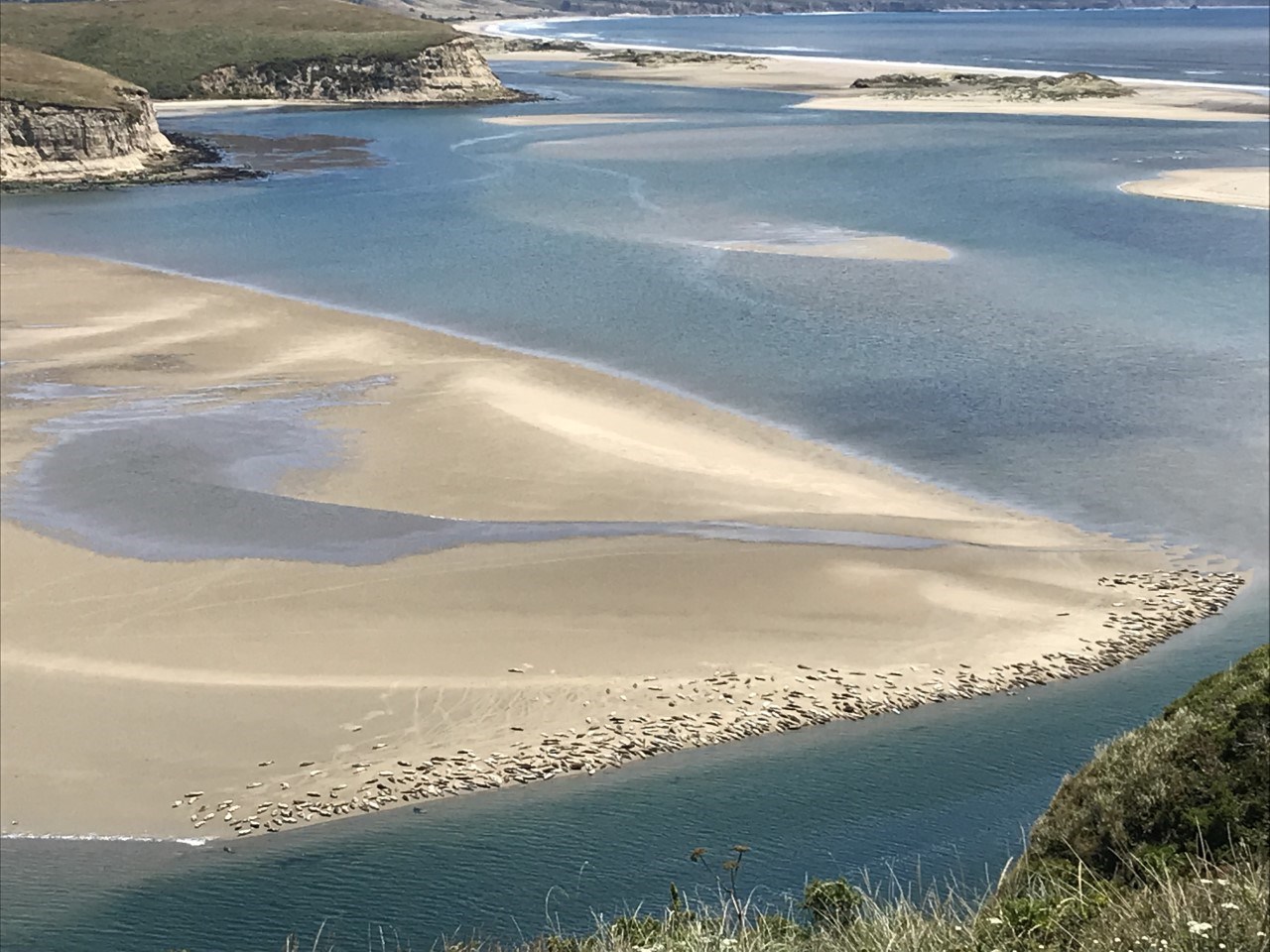Last updated: June 1, 2020
Article
The Case of the Missing Harbor Seals

NPS / Sarah Codde
May 2020 - Normally, biologists would head out weekly to survey harbor seals during their pupping season, from March through May. They would count adults and pups at eight pupping locations along the Marin County coast to be able to identify, and potentially help address, any unexpected changes in their numbers. In recent years, this monitoring might best be described as uneventful. This year, biologists were only able to conduct a couple of surveys at two pupping sites due to COVID-19, but in general, they expected more of the same. They were wrong.
Bolinas Lagoon and Drakes Estero were the two sites that biologists managed to survey. At Bolinas, the peak count this year was 240 adult/immature harbor seals and 170 pups. This is similar to the 2000-2015 average, but lower than the approximately 380 adults/immatures and 230 pups that biologists have seen at the site since numbers began to climb there in 2012. However, Drakes Estero is where things get interesting.
Drakes Estero has consistently been Marin County’s largest harbor seal pupping location. The 15-year average for that site is 780 adult/immature seals and 350 pups, or 1,130 total seals. Last year, as usual, most of the seals—almost 700 in total—were concentrated on one particular sandbar. This year, Biologist Dave Press was startled to count roughly half as many harbor seals—only 340 in total—on that same sandbar. The missing seals did not turn up on other sandbars in the estero, as numbers for the whole site were also down to just 478 adults/immatures and 180 pups. So what happened, and where did all of the seals go?
Biologists have a guess as to what happened. During one of his two surveys at the estero, Dave noted a coyote swimming across the 50–100 yard channel that separates the harbor seals’ preferred sandbar from the mainland. It was probably not doing so for the first time, and harbor seals do not like coyotes. They especially don’t like them near their young pups which are vulnerable to coyote predation. Biologists have also seen harbor seals abandon sandbars in Drakes Estero before in response to coyotes learning how to access them. In fact, that is how so many seals came to occupy their current sandbar more than a decade ago. Still, if the harbor seals did not simply switch sandbars this time, have they abandoned Drakes Estero altogether? If so, where did they go instead?
Unfortunately, concerned biologists may not be able to find answers anytime soon. Their current hope is to resume their regular surveys next year at all of the Marin pupping locations. Then, they will finally be able to search their peak counts for new clues.
For more information
- San Francisco Bay Area Network Pinniped Monitoring webpage
- Pacific Coast Science & Learning Center Harbor Seals webpage
- Point Reyes National Seashore Harbor Seals webpage
- Contact Marine Ecologist Sarah Codde
